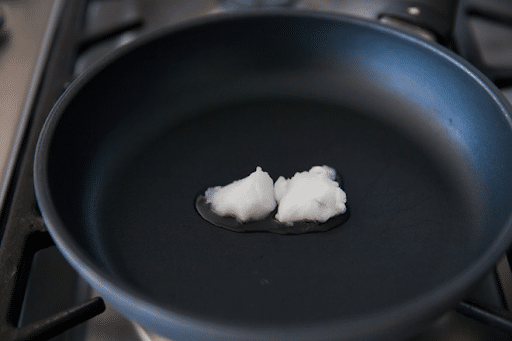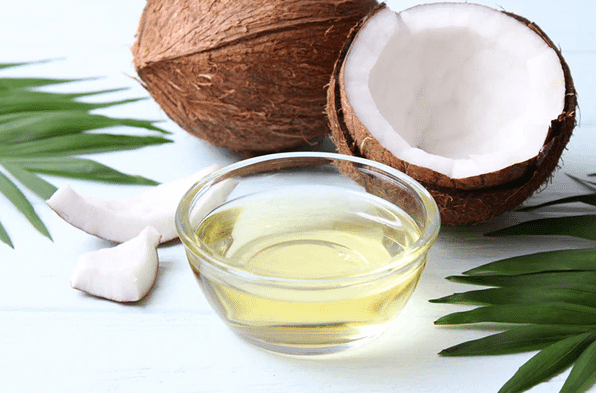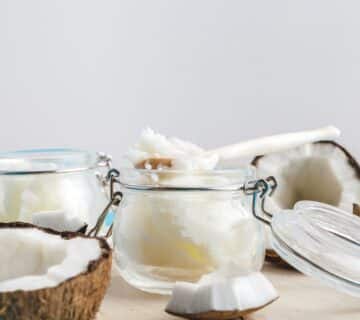Virgin coconut oil is a versatile and popular ingredient known for its health benefits and culinary uses. If you’re incorporating it into your skincare routine or using it for cooking, knowing how to melt virgin coconut oil can make all the difference in its effectiveness.
Fortunately, melting virgin coconut oil is a straightforward process that unlocks its full potential. In this article, we’ll walk you through the step-by-step process of melting virgin coconut oil to ensure you get the most out of this natural wonder.
How to Melt Coconut Oil?
Coconut oil is a staple in many households. However, its solid state at room temperature can sometimes pose a challenge when immediate use is desired. Fear not! Here are three simple methods to melt coconut oil quickly and efficiently:
1. Using Hot Water
The hot water method is a gentle and effective way to melt coconut oil without the risk of overheating, which can degrade its nutritional properties.

- Fill Up a Sink with Hot Water
Begin by filling your sink with hot water. The water should be hot but not boiling, as excessively high temperatures can damage the quality of the coconut oil. Aim for a temperature around 120°F (49°C).
- Place the Container of Coconut Oil in the Water
Place the container of coconut oil in the sink filled with hot water. Ensure the container is properly sealed to prevent water from seeping in. Submerge the container partially, allowing the hot water to surround it and gradually melt the oil.
- Remove the Container from the Sink After 90 Seconds
Leave the container in the hot water for about 90 seconds. This duration is usually sufficient to melt the coconut oil, depending on the volume and initial state of the oil. After 90 seconds, check the consistency. If the oil hasn’t fully melted, you can leave it in the water for an additional 30 seconds to 1 minute.
- Check and Stir
After removing the container from the sink, give it a gentle shake or stir to ensure the oil has melted evenly. If there are still solid chunks, repeat the process until the oil is completely liquefied.
2. Melting in a Microwave

Melting coconut oil in a microwave is quick and convenient, especially when you need a small amount melted quickly. Here’s how to do it:
- Use a Spoon to Scoop Some Coconut Oil Out of the Jar
Start by using a clean spoon to scoop out the desired amount of coconut oil from the jar. Coconut oil tends to solidify at room temperature, so you may need to use a bit of force to scoop it out, especially if the oil has solidified due to cooler temperatures.
- Put the Coconut Oil in a Microwave-Safe Dish
Once you’ve measured out the coconut oil, transfer it into a microwave-safe dish. Ensure that the dish you choose is suitable for use in the microwave to prevent any damage or accidents.
- Heat the Coconut Oil in the Microwave for 10-Second Intervals
With the coconut oil safely in the microwave-safe dish, it’s time to start melting it. Set your microwave to a low power setting, if available, or use the default power setting. Begin heating the coconut oil in the microwave for short intervals, typically around 10 seconds at a time.
3. Using a Stovetop

The stovetop method offers precise control over the melting process, making it suitable for larger quantities of coconut oil. Here’s the instructions how to do it:
- Selecting the Appropriate Pan
Choose a small saucepan or skillet that can comfortably accommodate the amount of coconut oil you’re melting. Avoid using nonstick pans with scratched surfaces, as they may leach harmful chemicals into the oil.
- Heat the Coconut Oil
Place the pan on the stovetop over medium heat. Allow the pan to preheat for a minute or two before adding the coconut oil. Once the pan is heated, carefully pour the measured coconut oil into it.
- Stirring Occasionally
Using a spatula or wooden spoon, gently stir the coconut oil as it heats. This helps distribute the heat evenly and prevents the oil from burning or sticking to the pan. Continue stirring occasionally to ensure uniform melting.
- Remove from Heat
After approximately 2 minutes of heating on the stovetop, the coconut oil should have melted into a clear liquid. At this point, remove the pan from the heat source to prevent further heating. Allow the oil to cool slightly before transferring it to a different container if needed.
Elevate Your Coconut Oil Experience!
As the allure of natural remedies continues to grow, the spotlight on virgin coconut oil intensifies. Nowadays, the demand for high-quality natural products like Virgin Coconut Oil (VCO) is on the rise, and of course it is for a good reason. With its unparalleled purity and nutrient-rich composition, VCO stands as a key to wellness in an increasingly crowded market.
As a trusted Supplier of Coconut Derivative Products from Indonesia, Sari Coconut is uniquely positioned to meet the demands of the supplying virgin coconut oil market. If you are in need of supplying virgin coconut oil, don’t hesitate to contact Sari Coconut.
With Sari Coconut as your partner, you can rest assured that your supply of Virgin Coconut Oil is not just exceptional in quality but also a force for positive change in the world!
FAQ
Can I store melted coconut oil for later use?
Yes, melted coconut oil can be stored in a sealed container at room temperature or in the refrigerator for future use. It will solidify again once cooled, but you can simply reheat it using the same methods when needed.
Does melting coconut oil affect its nutritional value?
No, melting coconut oil does not significantly alter its nutritional composition. However, prolonged exposure to high heat can lead to some degradation of heat-sensitive nutrients, so it’s best to melt coconut oil using gentle heat methods.
Can I melt coconut oil multiple times?
Yes, you can melt coconut oil multiple times without significantly affecting its quality. However, repeated heating and cooling may slightly degrade its flavor and nutritional properties over time.






